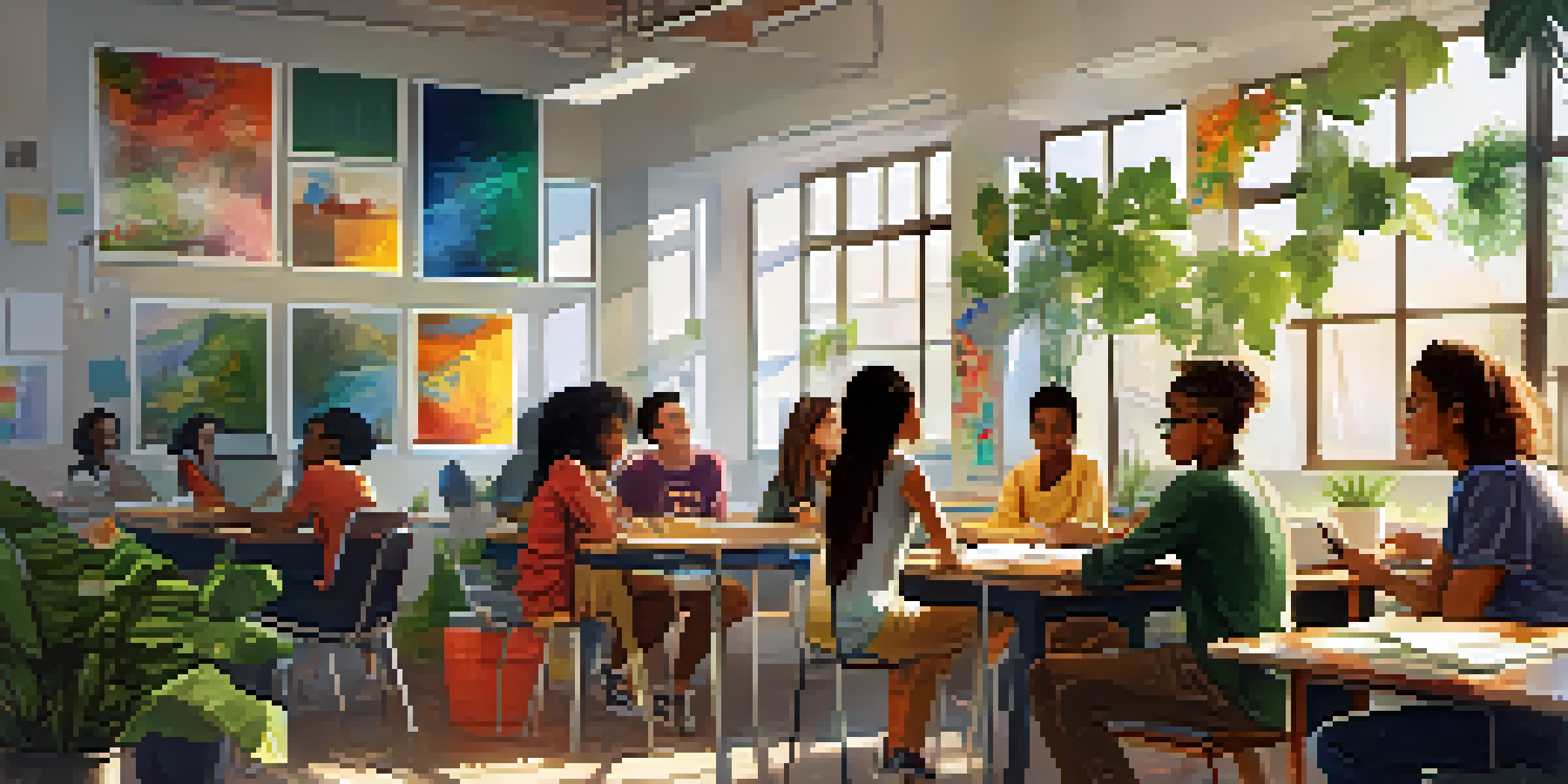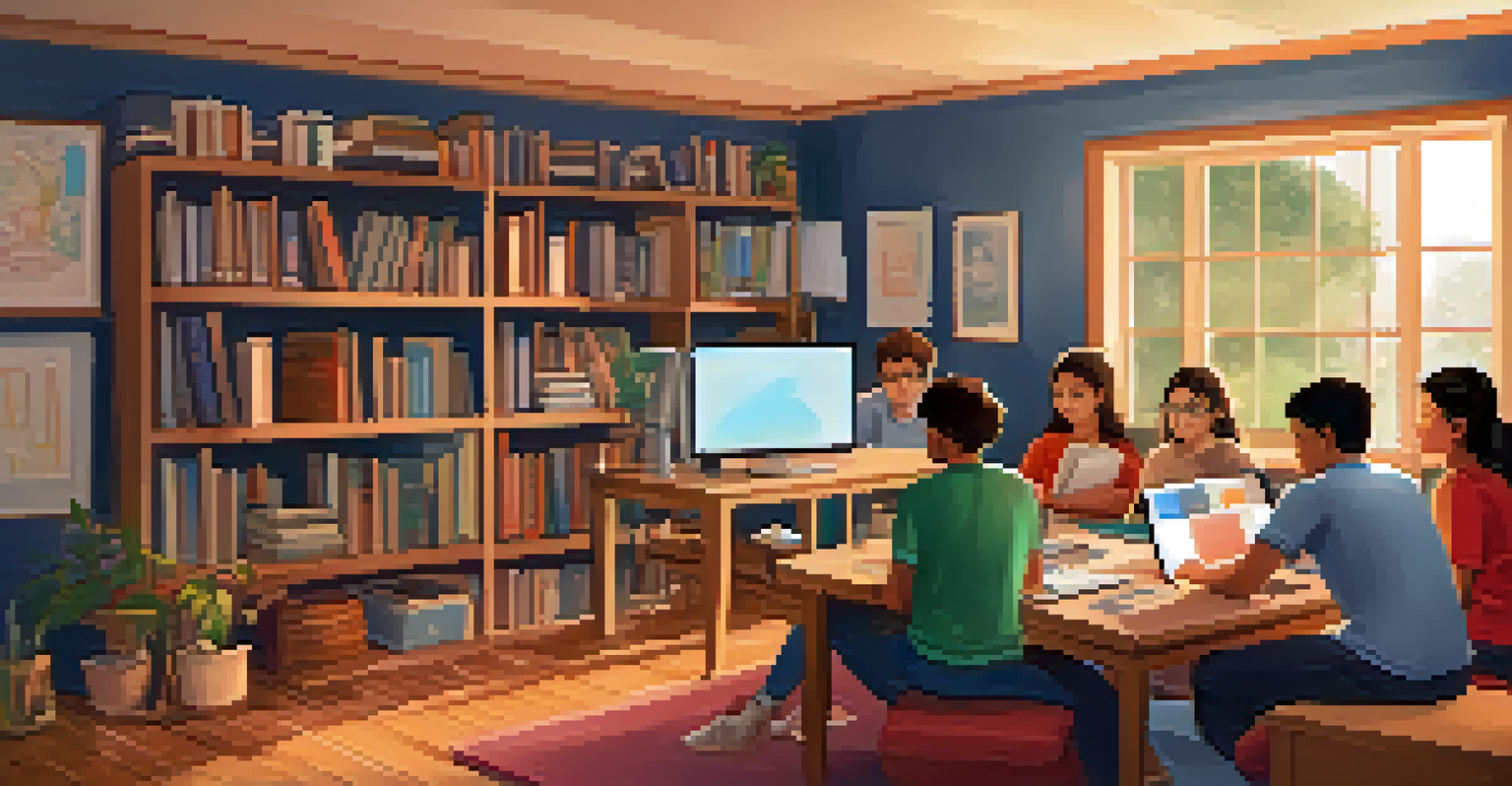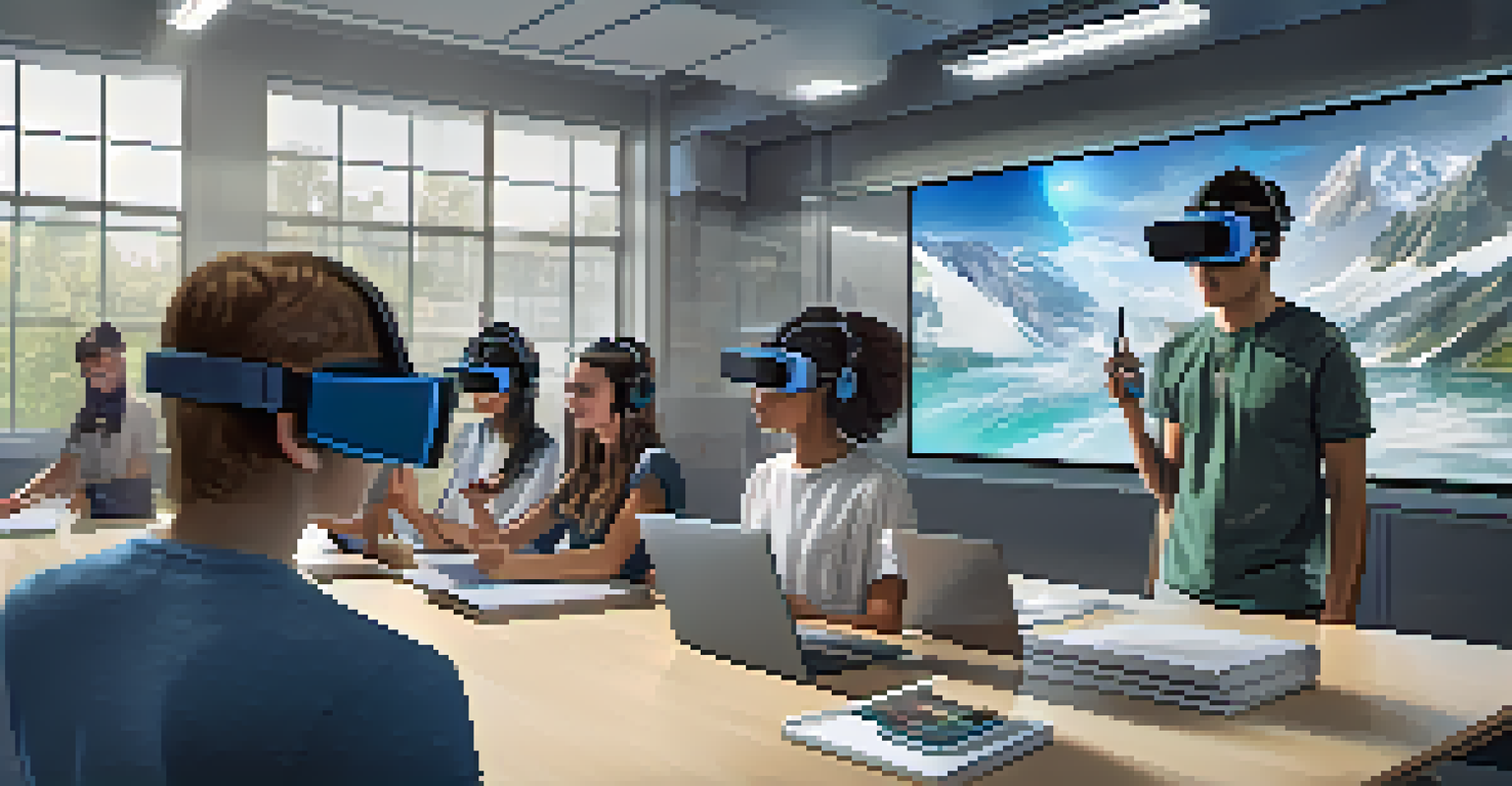Collaborative Learning and the Flipped Classroom Model

What is Collaborative Learning and Its Benefits?
Collaborative learning is an educational approach that involves students working together in small groups to achieve a common goal. It encourages communication, critical thinking, and problem-solving skills, all while fostering a sense of community among learners. For instance, students might engage in group projects or peer teaching, which can lead to deeper understanding and retention of the material.
Collaboration is the essence of life.
One of the key benefits of collaborative learning is the opportunity for students to learn from one another. When they share diverse perspectives and insights, they can challenge each other's thinking and broaden their knowledge base. This not only enhances their academic skills but also builds essential social skills that are crucial in the workplace and everyday life.
Moreover, collaborative learning creates an environment where students feel valued and supported. They are more likely to participate actively when they know their contributions matter. This sense of belonging can boost their confidence and motivation, leading to a more enriching educational experience overall.
Understanding the Flipped Classroom Model
The flipped classroom model is a teaching strategy that reverses traditional learning, where students first engage with new content at home and then apply their knowledge in the classroom. This approach allows for more interactive and hands-on activities during class time, shifting the focus from lecturing to collaboration. For example, students might watch video lectures at home and then work on problem-solving exercises in groups during class.

One of the main advantages of the flipped classroom is that it allows students to learn at their own pace. They can pause, rewind, or revisit the material as needed, ensuring they fully grasp the concepts before moving on. This personalized approach caters to different learning styles and can significantly enhance understanding and retention.
Collaborative Learning Enhances Skills
Students gain critical thinking, communication, and social skills by working together in group settings.
Additionally, the flipped classroom model encourages a student-centered environment. Teachers act as facilitators rather than traditional lecturers, guiding discussions and providing support as students collaborate on tasks. This shift not only empowers students but also fosters a deeper engagement with the subject matter.
How Collaborative Learning Fits into the Flipped Classroom
Collaborative learning and the flipped classroom model work hand in hand to create a dynamic educational experience. By preparing students with foundational knowledge at home, they arrive in class ready to collaborate and engage in deeper discussions. This synergy allows for more meaningful interactions, as students can immediately apply what they've learned with their peers.
The greatest danger in times of turbulence is not the turbulence; it is to act with yesterday's logic.
In a flipped classroom, teachers can design activities that promote teamwork and collaboration, such as group projects or problem-solving challenges. Students can tackle complex issues together, leveraging each other's strengths. This collaborative approach not only enhances learning but also builds essential skills like communication and teamwork.
Moreover, when students collaborate after engaging with the material, they often feel more accountable to each other. This sense of responsibility can motivate them to contribute actively and support their peers, creating a cohesive learning community. Ultimately, the combination of collaborative learning and the flipped classroom fosters a richer educational environment.
Challenges of Implementing Collaborative Learning
While collaborative learning has numerous benefits, it does come with its own set of challenges. One common issue is group dynamics; not all students may feel comfortable participating, which can lead to unequal contributions. For instance, some students may dominate discussions while others remain silent, creating an imbalance that can hinder the learning experience.
Another challenge is the potential for varying levels of preparedness among students. In a collaborative setting, if some students haven't engaged with the pre-class material, it can slow down the group's progress. Teachers need to find effective ways to ensure all students arrive ready to participate, perhaps through assessments or check-ins.
Flipped Classroom Promotes Engagement
This model allows students to learn at their own pace at home, leading to more interactive and collaborative classroom activities.
Lastly, assessment can become tricky in collaborative learning environments. Evaluating individual contributions in a group setting can be complex, as it's essential to recognize each student's efforts while also valuing the group's collective work. Teachers may need to develop innovative assessment strategies that provide fair and meaningful feedback.
Best Practices for Successful Collaborative Learning
To ensure collaborative learning is effective, it's essential to establish clear expectations from the outset. Teachers should define roles within groups and set specific goals for collaborative tasks. For example, assigning roles such as note-taker, presenter, or researcher can help structure the group's efforts and ensure everyone participates.
Additionally, providing students with tools and resources that facilitate collaboration can greatly enhance their experience. Digital platforms like Google Workspace or collaborative learning apps can help students share ideas and work together seamlessly, even outside of the classroom. This accessibility encourages ongoing collaboration and communication.
Finally, regular reflection and feedback are crucial for improving collaborative practices. Teachers can encourage students to discuss what worked well and what could be improved after group activities. This reflective process not only helps students learn from their experiences but also fosters a growth mindset, allowing them to become more effective collaborators over time.
Technology's Role in Enhancing Collaborative Learning
In today's digital age, technology plays a pivotal role in facilitating collaborative learning. Online tools and platforms can help bridge the gap between in-person and remote collaboration, enabling students to work together seamlessly. For instance, video conferencing tools allow groups to connect and collaborate, regardless of their physical location.
Moreover, technology can provide access to a wealth of resources that support collaborative learning. Students can utilize digital libraries, online databases, and educational sites to research and gather information for group projects. This not only streamlines their collaboration but also enriches their learning experience with diverse materials.
Technology Facilitates Collaboration
Digital tools enable seamless collaboration, access to resources, and tracking of group contributions, enhancing the learning experience.
Finally, technology can assist in tracking group progress and contributions. Many collaborative platforms offer features for assigning tasks and monitoring individual contributions, helping teachers assess group dynamics and individual performance. This transparency can motivate students to engage actively and hold each other accountable.
The Future of Collaborative Learning and the Flipped Classroom
As education continues to evolve, the integration of collaborative learning and the flipped classroom model is likely to expand. With a growing emphasis on student-centered learning, educators are recognizing the value of collaboration in promoting critical thinking and problem-solving skills. This approach prepares students for the complexities of the modern workforce, where teamwork is essential.
Additionally, the ongoing advancement of technology will further enhance these educational models. Virtual reality and artificial intelligence could soon offer innovative ways for students to collaborate, providing immersive experiences that deepen their understanding. Imagine students working together in a virtual environment to solve real-world problems!

Ultimately, the future of collaborative learning and the flipped classroom is bright. By fostering a culture of collaboration, educators can empower students to take charge of their learning while developing the skills necessary for success in an interconnected world. As these models continue to gain traction, we can expect to see even more transformative changes in the classroom.